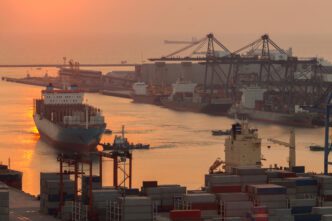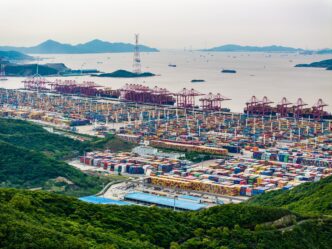The recent imposition of significant tariffs on all foreign imports by President Donald Trump has ignited a global trade conflict, sparking concerns about an impending economic recession. Following the announcement of these tariffs, financial institutions such as JP Morgan have increased their predictions of a U.S. recession, raising the likelihood to 60 percent from 40 percent. Other banks have similarly revised their economic outlooks downward, sparking fears of a unique type of recession marked by “stagflation,” characterized by stagnant growth, rising inflation, and increased unemployment.
Stagflation is particularly alarming due to its rarity and the complex challenges it poses. Typically, during economic slowdowns, unemployment rises while inflation decreases as consumer demand wanes. This relationship can be visualized as an extensive auction where consumers bid for goods and services, with prices rising based on the money available to spend. However, stagflation disrupts this dynamic, combining elements of both inflation and recession, thus limiting traditional governmental intervention strategies.
Historical instances of stagflation, such as the 1970s energy crisis caused by an OPEC oil embargo, demonstrated the difficulty of managing simultaneous increases in unemployment and prices. The resulting economic turmoil led to high energy costs, reduced investment, and widespread layoffs. Currently, no external factors are imposing such a supply shock on the U.S.; instead, economic policies through tariffs are inducing similar effects internally.
Trump’s tariffs act as a tax on imported goods, with varying rates depending on the country of origin. This policy reduces access to affordable international goods, contributing to inflation. Projections indicate that these tariffs could elevate the U.S. price level by 2.3 percent by 2025, potentially costing the average household $3,800. Furthermore, these tariffs might slow economic growth and increase unemployment as businesses face higher production costs and consumers possess less disposable income.
Economists predict short-term stagflationary conditions, exacerbated by the potential for retaliatory measures from trading partners. The stock market has already reacted negatively, indicating investor concerns over weakened growth prospects. The Federal Reserve faces challenges in determining the appropriate monetary policy response, weighing the decision to cut interest rates against the risk of exacerbating inflation.
Despite these challenges, some factors may mitigate the severity of stagflation. The U.S. labor market remains robust, with recent job growth exceeding expectations, and exemptions for key trading partners like Canada and Mexico lessening the immediate impact of tariffs. While initial price hikes are anticipated, long-term inflation effects are uncertain, as reduced consumer spending may eventually temper price growth.
Although a repeat of the stagflation crisis of the 1970s seems unlikely, the full consequences of Trump’s economic policies remain difficult to predict. These tariffs mark a significant departure from past practices, elevating American tariffs to levels unseen since 1909 and potentially prompting unpredictable international trade responses. In the short term, however, increased inflation and slowed economic growth appear to be certain outcomes.
Understanding the Impact
- The tariffs could lead to higher prices for everyday goods, affecting household budgets and increasing the cost of living.
- Businesses may face increased production costs and uncertainty, potentially resulting in job cuts and reduced investments.
- Consumers might experience diminished purchasing power, leading to decreased demand and further economic slowdown.
- The stock market’s negative reaction reflects broader economic concerns, potentially impacting individual investments and retirement savings.
- Global trade relations may become strained, complicating international business operations and affecting industries reliant on imports and exports.








